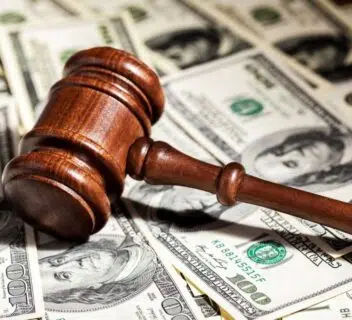What Are Potential Hit and Run Consequences? | Attorneys for Car Accidents
This article can help to answer these questions about hit and run consequences: What is a hit and run? | What are the charges for a hit and run? | Is a hit-and-run a felony or misdemeanor? | How many points for leaving the scene of an accident? | What evidence is needed to convict a hit and run?
Hit and run car accidents are a concerning and serious issue that can lead to both minor and major legal consequences. From minor hit and run charges to potential felony offenses, understanding the evidence needed to prove hit and run, along with the associated penalties, is crucial for both the driver of a vehicle and the victims involved.
In California, hit and run consequences can range from misdemeanor hit and run charges, leading to fines and county jail time, to more severe punishments depending on the circumstances of the auto accident.
How serious is a hit and run? The penalties can affect everything from car insurance rates to legal standing, making it essential to call the police and law enforcement at the scene and cooperate fully with the insurance company.
In this article, we will explore the various facets of what is the penalty for hit and run, looking into the legal ramifications and the importance of understanding your auto insurance policy and legal responsibilities.
If you are a victim of a hit-and-run accident, consult with a qualified hit and run lawyer for guidance. Contact 1-800-THE-LAW2 today to schedule your free consultation.
What Is a Hit and Run?
A hit and run is generally defined as being involved in a car accident, either with another vehicle, a motorbike, or even pedestrians. Then, leaving the scene of the accident without stopping to identify oneself, or to provide aid to anyone who might need assistance.
Common hit and run circumstances include:
- Drivers causing serious injury to a pedestrian and fleeing the scene because he or she was driving with a suspended license from a previous DUI charge and did not want to be charged for another offense
- Drivers hitting a parked car and leaving the scene to avoid paying for property damage
- Drivers hitting police cars that have been set up as part of a roadblock to avoid getting in trouble
Fleeing the scene of an accident has serious consequences. All drivers should think twice before leaving the scene of any accident they have been involved in.
Hit and Run Charges
What Is the Penalty for Leaving the Scene of an Accident?
In most states, including California, the act of leaving the scene of an accident—whether the driver of a vehicle caused the hit and run car accident or not—can lead to serious legal consequences. The fact that a party left the scene is usually enough to face hit and run consequences, ranging from misdemeanor hit and run charges to felony offenses, depending on the severity of the damage and injuries involved.
An exception to this might occur if someone left the scene to get help, provided that he or she returns immediately. This underscores the importance of understanding how serious a hit and run can be, and why it is essential to call the police or other law enforcement immediately after an auto accident. Failing to do so can lead to difficulties with both the legal system and insurance companies. The evidence needed to prove a hit and run might involve witness testimony, surveillance footage, or physical evidence at the scene.
In California, the hit and run consequences can be particularly stringent, affecting everything from car insurance premiums to one’s criminal record. Penalties might include fines, county jail time, increases in auto insurance rates, or the suspension of a driver’s license. Cooperation with law enforcement and your insurance company, along with a clear understanding of your rights and responsibilities, can be crucial in navigating the complex landscape of hit and run charges.
Major vs. Minor Penalties
Is a Hit and Run a Felony or Misdemeanor?
Hit and run consequences vary from state to state. Many states classify the charge as either a felony or misdemeanor depending on specific circumstances. Felony charges tend to be imposed in instances where a person has suffered any kind of injury, whether the injured person was a pedestrian or occupant in another vehicle.
Guilty persons may be fined anywhere from $5,000 to $20,000. In addition, they may face the possibility of jail time of up to 15 years. A misdemeanor offense, while less severe than a felony, is punishable by a fine of up to $5,000 and also up to one year in jail.
License Points
How Many Points for Leaving the Scene of an Accident?
In addition to criminal consequences of a hit and run, almost every state imposes administrative penalties related to the person’s license. Any conviction will usually result in automatic suspension, or even revocation of the driver’s license for about six months. Some states impose the suspension for as long as three years. Other states impose the suspension for a lifetime, depending on the circumstances of the accident.
At-fault drivers may also be subject to civil cases. An injured party can file an injury claim for damages to their property. They may also be able to file for compensation for medical treatment and lost wages.
What Evidence is Needed to Convict a Hit and Run?
In a criminal trial, a prosecutor must usually prove the following facts to find someone guilty of a hit and run:
- While driving, the defendant was involved in the vehicle accident
- The accident caused serious injury, permanent injury, or death to someone else
- The defendant knew he or she was involved in the accident that caused injury to someone else, or knew that injury was probable given the circumstances of the accident, AND he or she willfully failed to perform one or more of the following duties:
- To stop immediately at the scene
- To provide reasonable assistance to any injured persons
- To give involved parties or authorities their contact and vehicle information; if not their vehicle, to provide the details for the owner of the vehicle; to provide the name and details of injured individuals in his or her vehicle; to show a driver’s license upon request at the scene; to notify authorities without unnecessary delay to fatalities as a result of the accident.
The Bottom Line
The hit and run consequences in states across the United States, and especially in California, are severe and multifaceted. Whether it’s a minor hit and run charge or a felony offense, the legal system treats these incidents seriously. Drivers involved in an auto accident must understand the importance of remaining at the scene, calling the police or other law enforcement, and cooperating fully with their insurance company.
Leaving the scene of an accident, regardless of who is at fault, can lead to substantial penalties, including fines, county jail time, increases in car and auto insurance rates, or the suspension or revocation of a driver’s license.
The evidence needed to prove a hit and run includes not only physical evidence but also witness testimony and surveillance footage, reflecting the complexity and gravity of these charges. Civil liabilities may also arise, including injury claims for property damage, medical treatment, and lost wages.
If you’re involved in a hit and run car accident, whether as a victim or a driver, understanding these consequences and your legal responsibilities is vital. Legal advice from qualified attorneys specializing in hit and run cases can be an invaluable resource in navigating this complex legal landscape.
Call 1-800-THE-LAW2 to Find a Hit and Run Lawyer Near You
After a hit and run accident, you may still be eligible for accident compensation. Let our personal injury attorneys make the litigation process easier for you. Contact us today to schedule your free consultation.




